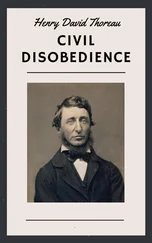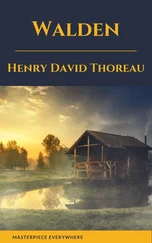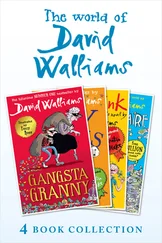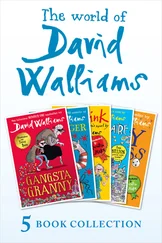Politika newspaper archive and pulled out the issues between the eighth and fifteenth of March. I didn't know what I was looking for exactly, but I pored over the city chronicle, the classifieds, and the death notices. I came across a brief news item in the March 10 issue that the body of a young male was found in the reeds along the Danube shore on the Zemun side, but there was nothing to indicate foul play. There was no follow-up of the news item over the next days, nor did I find anything among the death notices that could be tied to the young man. Then, in the March 15 paper, along with a news item about a man who'd been killed the day before in Surčin, I came across a mention of an investigation showing that the young man whose corpse had been found near Hotel Yugoslavia had been killed by a blunt object. The identity of the victim was still unknown. I put the paper down and rubbed my face. My heart was pounding as if I had come to a sudden halt after a horrific run; I felt dizzy, nausea climbed up my esophagus. I don't know how I got out of the
Politika building. All I know is that I caught sight of myself in the window of a glass-cutting shop. The wan, rumpled figure smiling anxiously at me must have been me, though there was no indication that I had recognized myself. I turned and kept walking down the street that, as it turned out, led to Zeleni Venac. I got on a bus to Zemun, and not until the crowds around me grew larger did I finally pull myself together. If the news in the paper had been accurate, and there was no reason to think it was not, and provided this had been the very same young man, then what had happened was much more than a game. For a moment I even thought that I was to blame for the young man's death, for had I gone after him instead of pointlessly following the woman, he might be alive today. On the other hand, something else could have happened: I could be dead today, because clearly, the people the young man had rubbed the wrong way would have been just as sensitive about witnesses. Therefore, I should be pleased that I had followed the woman; still, I couldn't rid myself of the bitter taste of complicity or betrayal. The bus crossed the Sava Bridge and turned toward Zemun. In the distance along the promenade cyclists and strollers could be seen. A little girl was holding a string tied to a kite flying high above her. Big and little dogs romped in the bright green grass. Two boys tossed a Frisbee back and forth, and it wobbled through the air as if exhausted. The bus passed Hotel Yugoslavia. There was nothing at the top of the artificial hill but the pillars of the old Zemun railroad station, protruding like the ruins of antiquity. I got off the bus at the square, went into a supermarket, and spent about fifteen minutes studying the ingredients on various canned and processed foods. Nothing calms me so profoundly as the partially intelligible lists that reduce food to an extremely unappealing form. A cookie, for instance, becomes flour, sugar, vegetable shortening, cocoa powder, powdered skim milk, ammonium bicarbonate, sodium bicarbonate, lecithin, kitchen salt, natural coloring, and natural aroma. I read this in several languages: Serbian, Albanian, Slovene, Croatian, Macedonian, English, Hungarian, and Romanian. Then I bought some bread and yogurt and went home. Over the past few days and weeks I had been unsure how to act in certain situations, but now I felt I'd lost ground altogether. It did occur to me, I must confess, that I should flee; inevitable thinking in such situations, but never for a moment did I consider this acceptable. Later I did run away, that's true, but the circumstances were entirely different and flight was a necessity rather than a choice. I'll get to that later, there's time. Flight, therefore, at that moment was out of the question, as was my next thought: that I should go to the police. I had no faith in the system, I didn't side with the regime in power, which meant that I had nothing to hope for from the police: they had quite a number of unsolved crimes on their hands, after all, one more would have meant nothing to them. Maybe I could write something for my column in
Minut? I had to laugh: after holding forth for so long on how postmodernism had broken with a more traditional approach to language and form, here I was considering a text to be a reliable source of information, prepared to believe in words. Besides, what could I say in such a text when I knew nothing? I had seen someone who was, perhaps, now dead, and except for that unconfirmed death, I had no other information. That meant I had only one choice: no longer to wait for things to happen or not happen to me, but to make them happen. It was high time, I thought, for all the diverse streams to become a single course, for everything to become something, no matter how unconnected it appeared, or to finally dissolve into nothing, a marvelous solution that would offer complete freedom, and was, I had to say right off the bat, the least likely. And so the next day, armed with a pad and colored pencils, I set out for a detailed inspection of the Zemun market. It was a beautiful spring day, pleasantly warm, with clouds racing across the sky, and the market, when I arrived, swarming with people. I intended to cover as many streets as possible, looking carefully around, to record all the spots where I saw the sign made of the circle and triangles, as well as all the places where there were possible traces of the sign. I had to bear in mind the likelihood that most of the signs had not been drawn using permanent materials, so those drawn in chalk, or perhaps in crayon, were likely to have disintegrated. For instance, the signs I had seen earlier on Zmaj Jovina Street were no longer visible, which didn't mean that they played no role in the overall constellation of signs. Once I had completed the list, I intended to draw their locations on a map of Zemun and by so doing gain additional insight or a sort of key for my future moves. To be frank, I had no notion of any further moves, but I did have the hope that they would take form in and of themselves or that they would suggest themselves in a clear light the moment I made a map of the signs. I walked toward the market along Beogradska Street, where I found no traces of any kind. I turned into Mornarska, took two or three steps, spun around and went back. I obeyed a murky feeling, I said later to Marko, that I would find no signs there. So I went back to Beogradska Street and stepped into the bustle of the market. I passed by the stalls that offered the most varied merchandise, items of food, hygiene, electrical and plumbing equipment, men's and women's underwear, wooden spoons and three-legged wooden stools, coffee and detergents. Behind them were the vegetable stalls. I dove for a moment into the crowd, then came back to the first row of stalls, where I bought some chocolate. If there was a sign inscribed anywhere in that part of the marketplace, it was pointless to look for it, so when I arrived at the end of the first section of the market I turned off onto Gospodska Street and headed toward the quay. On the quay, across from the Venezia, I saw a few chalk drawings on the sidewalk, one resembled a spiral and the other a tangled ball, which had nothing to do with my signs. My signs? I am always amazed at the ease with which we adopt things, even when there is no question of ownership, because if there is something that was not mine, it was those signs, that much, at least, is clear. I looked to the left, I looked to the right, then turned left toward the corner of Zmaj Jovina Street. Here, a few weeks earlier, I had come across the first sign, hidden under a button. I stopped and entered that fact in the notebook. I wrote in black: the black was to mark the absence, or rather the absence of a presence; I planned red for entering newfound signs, blue for the possible vestiges of signs, while green was to serve for lingering vestiges that may not have been drawn as parts of signs. There was nothing at the spot where the black button had lain, just as there was nothing on the steps where I had seen the sign when I leaned over to pick up the woman's potato. Now too the street was littered, so I had to pause at every step, shove aside crumpled newspapers, pick through heaps of trash, lift plastic bags. At the corner of Gajeva, at the foot of a traffic sign, I came across an unfinished triangle, drawn in chalk, which might have been part of a smaller, inner triangle, inscribed in a larger triangle. I jotted this down in the notebook, in blue this time. Not far from the remnant of the triangle was an arrow pointing to the opposite side of the market, to Dositejeva and Karamatina streets. As children we used to leave signs for friends: by following the arrows they would find where we were waiting for them. I walked down Gajeva and soon came across a new arrow, pointing to the left, to Dositejeva Street. I saw yet another arrow, and then a boy who, a little farther along, was drawing a new arrow on the pavement. When he saw me, he ran off. He shouted something, without turning, then ducked into an entranceway. I didn't even try to follow him. I went back to Gajeva Street, and as I passed by the old foundry, I finally caught sight of the first real sign. After that it got easier. From Gajeva I went into Karamatina and walked down its one side to the quay, came back along the other side to Muhar, and then along Glavna Street to Zmaj Jovina. By then I had recorded six or seven signs and several possible traces, including one triangle with a dot in the middle, which, I suspected, represented something different, but it was easier for me to consider it a remnant of a sign to which someone, either by chance or on purpose, had added a dot. Then I walked along Zmaj Jovina Street. On the fence around the construction site behind the theater, in a sheltered spot, I noticed four signs, as if someone was practicing drawing them. At the large wooden gate, where there had been the poster advertising tai chi classes, a much larger poster was up, announcing a concert of folk music. I studied the poster carefully; I found nothing; a part that was smudged suggested a trace of lipstick, the imprint of a kiss someone had planted on the cheek of a performer. I peeked into the passageway that led to the inner courtyard, went over to the bench, checked the water pump and the barberry bushes. No traces there. Back I went into the street, passed down one side and then up the other, and ended at the quay. I found another seven or eight signs along Zmaj Jovina, as well as two traces, both by the first market stalls. Before I went into Gospodska Street I circled around the Harbormaster's. The gallery was closed, half dark, and when I pressed my nose against the glass door, on the facing wall, next to a photograph, I thought I could see the sign, but when I looked again a moment later, the wall was an unblemished white. I continued walking and recording with the different colored pencils, and when I got hungry, I went into a bakery and had some
Читать дальше
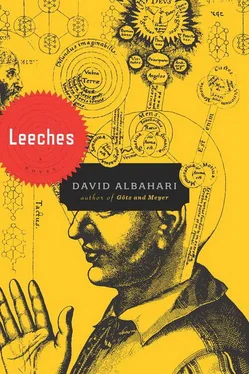
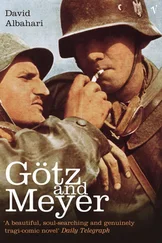
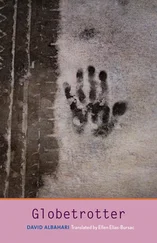
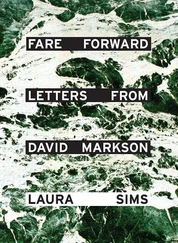
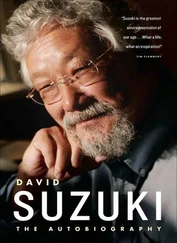
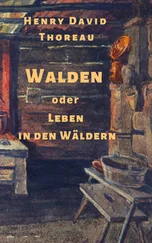

![David Jagusson - Fesselspiele mit Meister David [Hardcore BDSM]](/books/486693/david-jagusson-fesselspiele-mit-meister-david-har-thumb.webp)
